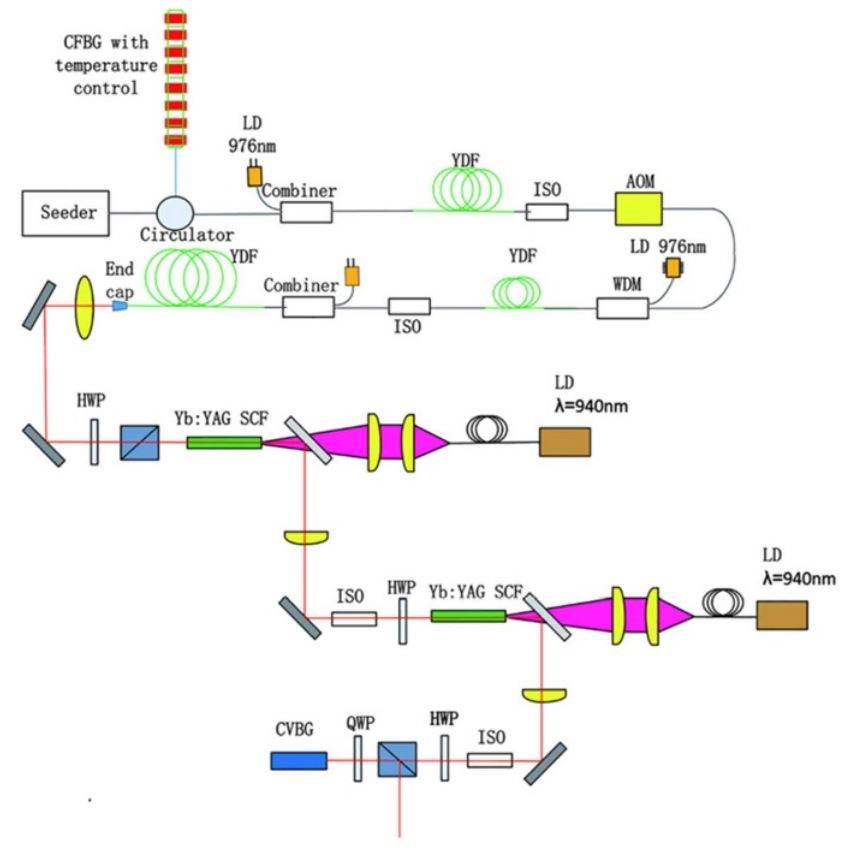High peak power ultrafast lasers, also known as high-energy and high-power femtosecond lasers, have versatile applications in both scientific research and industrial applications.
A variety of laser setups are developing to achieve it, however, bound to its inherent complexity and multiple passes of the laser beam with no optical wave-guide, this technology is still far from widespread usage.
A research team led by Prof. Yishan Wang from Xi'an Institute of Optics and Precision Mechanics (XIOPM) of the Chinese Academy of Sciences (CAS) proposes a high-energy chirped pulse amplification system based on a fiber preamplifier and a two-stage high gain Yb: YAG single-crystal fiber amplifier with a simple single-pass setup and a CVBG compressor.
This compact and simple structured system produces pulses of 858 fs and 284 μJ energy at 28.4 W of average power with high stability, which will provide enormous applications potential in both scientific research and industrial implementation. The result was published in Laser Physics Letters.
 The layout of the high energy chirped pulse laser system CFBG. (Image by XIOPM)
The layout of the high energy chirped pulse laser system CFBG. (Image by XIOPM)
In recent studies, a variety of laser setups are developed to obtain a high-energy and high-power femtosecond laser. Among them, the solid-state laser plays an important role in ultrafast laser amplification.
However, restricted by its inherent complexity and multiple passes of the laser beam, its stability is still not satisfactory. Compare to this, the fiber laser has many advantages such as high gain, free from thermal effects and high beam quality. However, it also brings the nonlinearity as its side-effect, which will limit the peak power and the pulse energy. To overcome the nonlinearity of the fiber laser, single-crystal fibers (SCFs) are a good breakthrough point.
In their work, an all-fiber preamplifier is been built with an acceptable nonlinearity accumulation. In specific, a two-stage single-crystal amplifier is used, and the compact CVBG compressor is used to compress the amplified laser pulses. Besides, to diminish the influence of the pulse duration induced by the nonlinearity during the amplification, the repetition rate of the self-made fiber seeder is changed to 100 kHz. Under these circumstances, the experimental results are very cheerful.
This compact and high-energy femtosecond laser system has demonstrated its high-level quality in producing ultrafast laser amplification, which will have versatile applications in both scientific research and industrial applications, such as high harmonic generation and hard x-rays generation.
Besides, in the material processing field, the ultrafast laser has huge potential due to its high peak power and ultrashort pulse width. High-energy femtosecond lasers can be applied to do micromachining with high precision and little thermal effect. In addition, it can process all kinds of materials, which is very valuable and practical.


